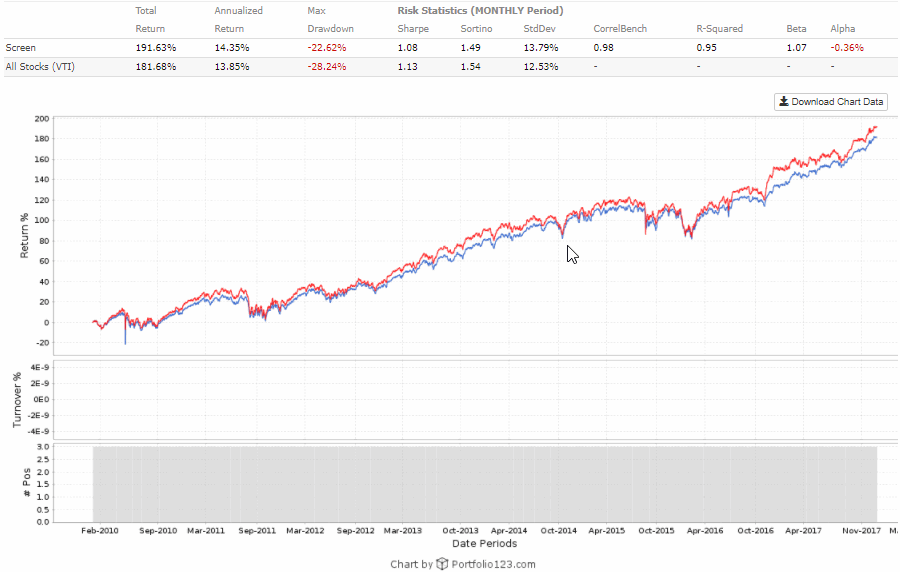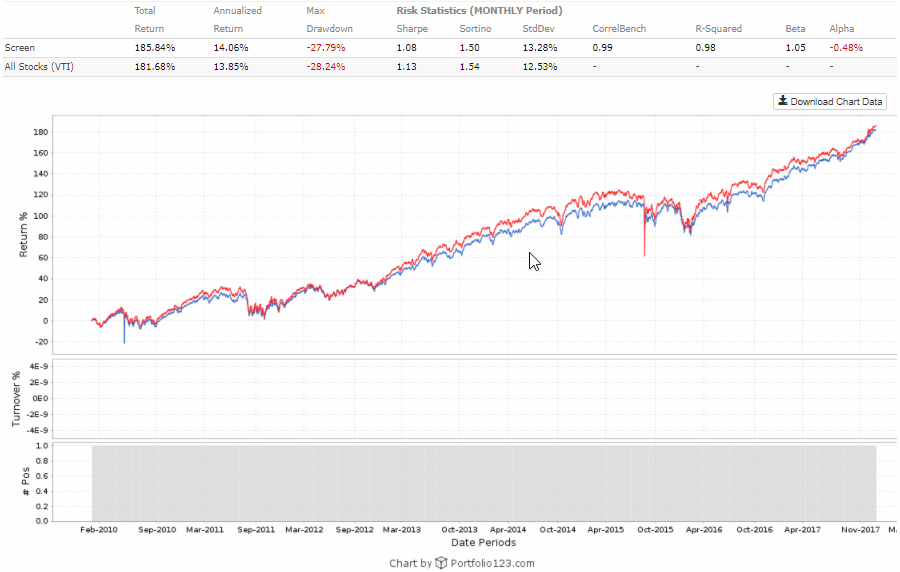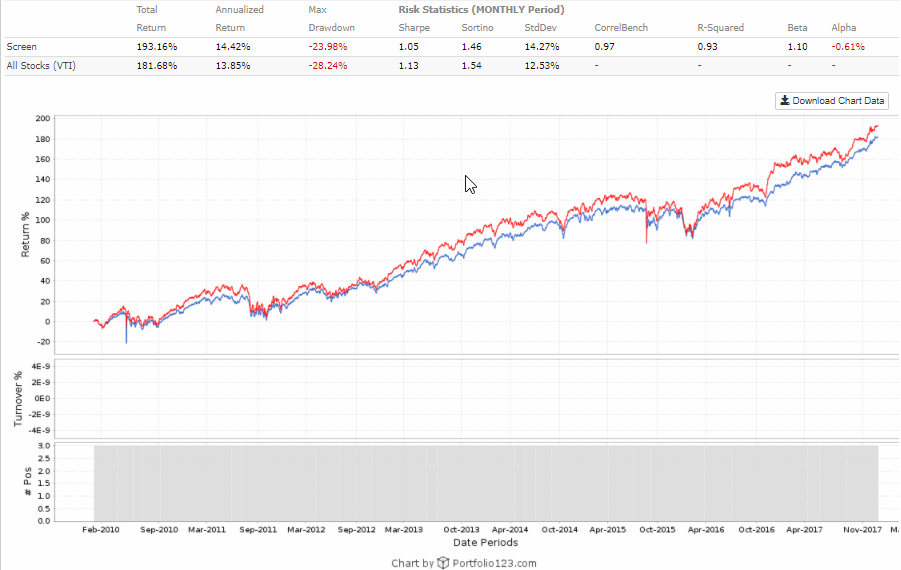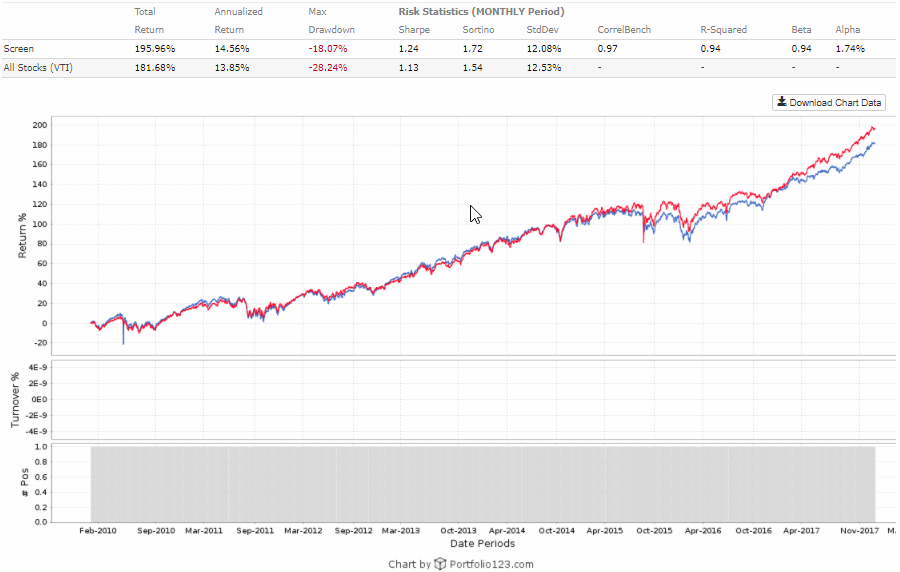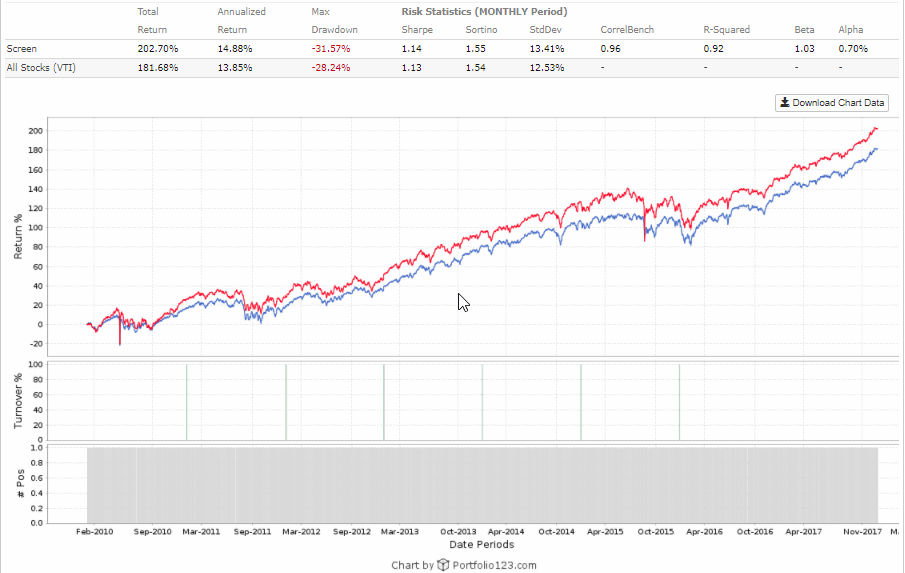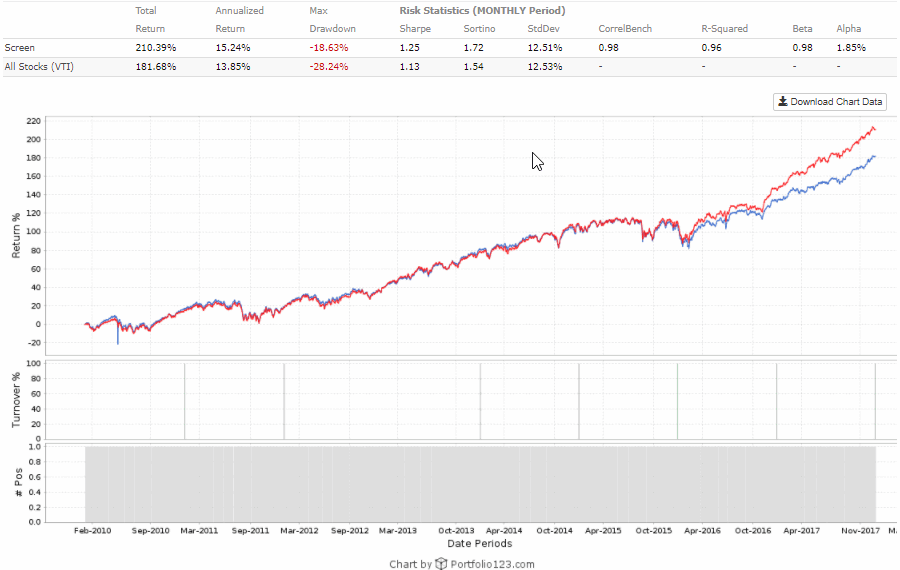Index Investing Variations
Index investing is a powerful addition to your portfolio of strategies. Even more so when both large draw-downs and whipsaws can be avoided with composite market timing.
Index Investing Constraints
However, there are some less obvious constraints imposed by the market cap approach to index construction.
And there is the investing style issue. An index is a blend of growth and value stocks, but are there times when a value subset of the index or a growth subset of an index may be a better choice?
Market Cap Considerations
Market indexes are generally cap-weighted. In fact, this is one of the reasons the fees associated with these ETFs are so low. However, market cap weighting does create some interesting issues.
For example, according to Wikipedia the total market cap of the S&P 500 as of 29 Dec 2017 was US$ 23.9 trillion. Apple, the largest company in the S&P 500 by market cap, accounted for 3.7% of the total. The largest 5 by market cap accounted for 13.9% of the total and the largest 10 by market cap accounted for 21.7% of the total.
The top 50 stocks by market cap account for almost 50% of the total market cap of the S&P 500.
So when these companies do well, the index does well.
The smallest 5? They account for 0.1%. So even if each of the smallest 5 doubled, the effect on the performance of the index would be negligible.
If the disparity in performance among 500 of the largest stocks available is this great, you can imagine that the smallest cap stocks in the total stock universe have even less effect on performance.
And that is the core issue. Small and mid-cap stocks have little if any effect on the overall performance of the index. But, quite often they out-perform the large cap stocks.
Can small cap stocks become large cap stocks? Yes. The current top 5 (Apple, Google, Amazon, Microsoft and Facebook) were once small cap stocks.
There are 2 common ways to address this disparity in effect on index performance.
1 - Multiple Cap-weighted Indexes
Rather than pick a single ETF to cover the entire stock market, pick multiple indexes each covering a market cap section of the market.
For example, a large cap index ETF, a mid-cap index ETF, and a small cap index ETF. Using SPY for the large cap S&P 500, MDY for the mid-cap S&P 400 and IJR for the small cap S&P 600 would pretty much cover the market.
This would still over-weight the largest cap stocks in each of the 3 indexes, but would better reflect the performance of the mid-cap and small cap stocks. The largest 50 stocks by market cap no longer account for 50% of the performance, but about 16%.
If 1500 stocks from the S&P indexes doesn't sound like the entire market, keep in mind that VTI does not include all the stocks in the market - it is a representation of all the stocks in the market. In fact, as of March 2018, VTI held only 1482 stocks - not all the available stocks.
From 1 Jan 2010 through 31 Dec 2017, the performance of using all 3 ETFs (SPY,MDY,IJR) vs VTI is shown below:
You would still have passive ETFs, but 3 of them, not 1.
Does it matter? Not necessarily. But it doesn't hurt.
2 - Equal weighted indexes
Another approach is to simply buy an equal weighted version of the index. Equal weighting means every stock has the same effect on performance. Note, however, that equal weighting requires active management.
RSP is an equal weighted ETF of the S&P 500. For the period 1/1/10 through 12/31/17, the performance of RSP vs VTI is shown below:
Guggenheim (the folks who created RSP) also offer an equal weight ETF of the S&P 400 index, EWMC, and an equal weight ETF of the S&P 600, EWSC. Both were initiated on 12/3/2010.
Replacing SPY with RSP in the multi-ETF scenario produced the performance below:
Investing Style Considerations
Investing style (value vs growth) is another variation of index investing. The ETFs representing style are active, not passive, so there is some additional expense involved. With regard to style, the entire market includes both value and growth stocks and is referred to as a "blend".
However, it is performance that finally matters. And as shown above (the equal weighted example), an actively managed index may out-perform a passively managed index. At least some of the time.
IVW is an ETF representing S&P 500 growth stocks. The next chart shows the performance comparison vs VTI:
A similar comparison of VTI vs IVE (an ETF for S&P value stocks) shows VTI outperforming the value stocks. This is atypical and is a reflection of the period under consideration.
Index Investing with ETF Rotation
As you can imagine, sometimes value works best and sometimes growth works best and sometimes blend works best.
The solution?
Use a ranking system to rotate between value, growth and blend ETFs.
In the case of market cap, you could rotate between large, mid and small cap ETFs.
Market Cap Rotation
Using one of the Portfolio123 ETF ranking systems, the market cap ETFs were ranked at the beginning of each year and the top ranked ETF was used for the year. Instead of buying and holding VTI for eight years, a different ETF could be selected and held for 1 year for each of the 8 years.
So, instead of buy and hold, the index used might change each year.
As shown below, the ETF did not necessarily change year to year:
Investing Style Rotation
Rotating between S&P 500 value, growth and blend ETFs shows even greater out-performance than the market cap rotation.
Again, a Portfolio123 ETF ranking system was used to select the top ranked ETF at the beginning of each year.
In addition to the performance chart, the following stats refer to the Style Rotation approach to index investing.

Another alternative for rotation index investing would be Sector Surfer. Simply load the market cap or investing style ETFs (or both).
Summary
For some of the variations, you are increasing the effort involved in maintaining the strategy and must decide if the reward is worth the effort. And, additional expense may be incurred because of the need for ETF screening tools.
The ETFs used in the examples are not the only alternatives.
The performance summary of the above examples illustrates that, in some cases, the variations had better CAGR and positive alpha - a win.
Note also the favorable drawdowns compared to VTI.
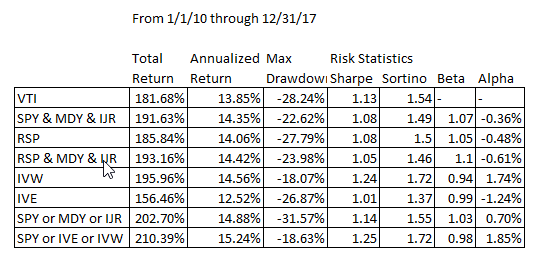
Periods of favorable market climate were used to illustrate these variations to index investing. But even the variations are victims of large draw-downs if unfavorable markets are not avoided.
HOME | Site Policies | Contact Us | About Me | About Site | Site Map
Popular Pages
CANSLIM Strategy
Folio Investing
Economic Indicators
Portfolio123
Ranking Systems
New
We value your suggestions, comments, and questions.
Our goal is to make this site as useful as possible.
Contact Us
Thanks!
Stock screening tools and consistent, sustainable investing processes.
About Me
Why build a website instead of a blog?
About this site
March 2018
